•
Last week we talked about what to study to become a fashion editor, showing you the different bachelor degrees you can take, and today we are continuing the series by discovering how to become a fashion editor with a special focus on the skills.
Let’s recall who a fashion editor is, what they do, and what important thing you should have in mind before diving into the top skills you need for this role.
How To Become A Fashion Editor
In order to become a fashion editor, you will need to start with an internship at a fashion magazine first. Yes – a fashion editor position is not an entry-level role. If you are a student, recent graduate, or just someone with no or little experience, your career path towards the job as a fashion editor should begin with an internship – for example as an editorial assistant, an intern-assistant to the fashion editor, intern writer, or any similar role. Then you will make your way up to the editor’s assistant (not an internship, but a job this time). And only after a couple of years, you can expect to become an editor, and eventually an editor-in-chief.
It may sound like too big of a dream today because you don’t have experience yet. But I am here to give you tips on how to achieve that goal. The path to the role of a fashion editor doesn’t depend on your lack of experience or the fact that you don’t have a degree in fashion. It’s a combination of the right way to start (aka get an internship) and learning some skills. But before focusing on the skills, let’s get to know what the job of a fashion editor involves.
What Is A Fashion Editor
What a fashion editor does
Even though they work at magazines a fashion editor’s duties include more than just writing articles. A fashion editor is a fashion writer + stylist. Some fashion editors do more styling, others do more writing. This is more of a personal choice. If you prefer to focus on writing only you can do so. But if you want to add some styling as well you know that editors could do both.
Besides writing in fact, editors also work on set to produce fashion editorials and they are responsible for deciding what goes on the magazine’s fashion pages – from selecting this season’s staples to put on the product pages to which articles to feature or what photo shoots to include. They are ultimately responsible for their whole sector. Whether this is digital content to choose from or organizing the layout of a shopping page in the physical magazine.
Fashion editors can work as freelancers or be employed by a magazine. Freelance fashion editors can have multiple clients and therefore work with different magazines at the same time. They get paid for the project. Employed fashion editors instead, work full-time at one magazine.
Skills Needed To Become A Fashion Editor
If you dream of a career as a fashion editor or journalist, your writing skills are definitely crucial but they are not the only thing you need if you want to become a successful fashion editor.
While you might believe that fashion editors spend their days writing articles, you should know that there is a lot more behind an article than just typing words.
If you think about it, an article is made of different components: generating the idea first, the images that go with it, the interviews, opinions, or comments if there are, the research part. And there could also be the part where you manually upload the article on the website and hit publish.
That’s why if you want to become a fashion editor there are other skills you should consider and train.
Whether you are just at the beginning of your career, an intern, a student, a freelance, or with some experience already, these are the skills you need to be a fashion editor.
Practice your writing skills
Of course, your writing skills must be on point. However, there are different writing styles, so just because you don’t write like your favorite fashion editors, it doesn’t mean you are not a good writer. Not all editors write the same. Some write as they speak, using the first person, especially when writing for online and digital publications where a reader spends less time consuming an article and so texts are shorter and more digestible. Others use a more picturesque language (have you ever read an article by Angelo Flaccavento on Vogue Italia or BOF? ).
The beauty of writing is that it’s made of different shades.
It’s important to read what and how the other editors are writing but it’s fundamental to have your unique voice and build your writing style. The most famous fashion journalists have a strong writing style that you can recognize their pieces even before reading who the author of that article is. Developing your own writing style is something that you’ll practice with time. But it’s important to start considering it now if this is the career of your dreams. Furthermore, the digital space has brought more opportunities and different ways of creating stories breaking down some old fashion journalism barriers (just think of fashion blogs and anyone can write a fashion story today.)
While your own writing style is something that you will develop with time, something you need from the very beginning is perfect grammar. Your grammar must be on point from the very first moment you decide to write an article. No one will ever publish an article that has a grammar or spelling mistake. This is super important.
It’s not a problem if you are not writing the most interesting article of the week, but everyone will remember your grammar mistake so make sure you proofread all your articles the following day or some hours after your first draft to make sure it’s on point. You’ll get better with practice so write something every single day to train your writing skills.
Develop your research skills
Fashion publications are looking for fresh and new ideas every single day. Especially fashion websites that publish lots of stories on a daily basis. You need to develop your research skills to work as a fashion editor both to find new ideas and to research the topic you will write about. Finding ideas of a critical part of your job or basically, you won’t have anything to write about. You can find ideas anywhere: on social media, by reading other articles, looking at what’s happening in the industry, talking to people…When generating your ideas you have to think about the lead time which is an industry term that considers when the article is going to be published.
The lead time depends on the publication if it’s a monthly, weekly, or newspaper or if it’s a blog or website that gets updated daily. For the monthly issue of Vogue, for example, lead time is on average 6 weeks – 3 months. With digital publications, this can go from a couple of hours (see fashion news or runway reports) to the day before or one week in advance. So when you are searching for ideas for an article you need to consider when this is going to be published to make sure it’s relevant at that specific moment.
Practice your pitching skills
After having generated your ideas, you need to propose them to someone: the team if you are employed by a fashion publication or the magazines you contribute to if you are a freelancer.
Whether you are working as a freelancer selling your stories to publications or you are working at a fashion magazine there is always the pitching part. If you are a freelancer you have to be great at pitching and so proposing and selling your stories to the different fashion magazines you want to write for. When you are working for a fashion magazine part of your job is to pitch your article ideas during the editorial meetings that happen daily or weekly according to the company. Most fashion editors are not waiting for their stories to get commissioned by the managing editors, they are pitching their own.
So if you are a freelancer pitching is vital as the more you pitch the more stories you’ll get published and so the more money you make. When you are working at a fashion magazine, the more you pitch the better you become at your job and the more stories will assign to you (hello promotion!). Even when you are just an assistant or intern, if you want to become an editor you need to bring fresh ideas to your editors.
Gain fashion industry knowledge
You can’t write about fashion without knowing fashion. And just to be clear, knowing about fashion doesn’t mean only staying up with fashion trends, watching fashion shows, and looking at the latest collections of your favorite fashion brands. You need to learn how the fashion industry works, who are the key players and its history. Great articles reference past events or recent news and your only way to connect the dots between different stories, examples, or case studies it’s knowing about the industry. So take a fashion history course, read books, and stay up to date every single day with the latest news in the industry. Reading is a key component of a fashion editor’s career. Don’t just read about fashion though. It’s important to know what’s happening in the world so you can make your writing more relatable to real life and normal people.
Learn SEO
SEO stays for search engine optimization, basically is that feature that if set up correctly puts your article on top of the search results when people google specific keywords. So for example, if you type on Google: “best shoes of 2022” ideally the first article that should appear on top of the search results is yours. So why is this one of the skills to work as a fashion editor? Doing SEO correctly is fundamental for fashion publications to drive traffic: the more people are going to find your content, the more readers. SEO is probably the techiest part of this job but it’s not so difficult. It’s enough to follow some rules when writing the articles for example adding your keywords and links as well as using the correct tags for your images.
Practice your networking skills
A great fashion editor builds up their contacts. Whether they are people in the industry to ask for their opinion for a feature or PRs to talk about the latest product or other editors if you are a freelancer and you want to publish for that magazine, building your own database of contacts it’s part of the job. These relationships can all be built online. So even if you are not living in a fashion capital, you are working remotely as a freelancer or you are an introvert, you can start building the connections you need via LinkedIn and Instagram.
On these two platforms you can find people you want to connect with according to your goal: an interview, asking for an opinion for your next article, pitching your article idea if you are a freelancer…start following them all on Instagram, connect with them on LinkedIn and build an Excel sheet with a database to keep track of their email addresses.
Learn WordPress, Photoshop, Google Analytics
With most of the fashion publications being online nowadays, it definitely helps to add to your skillset also some tech tools. It can happen that the editors ask you to resize an image. So it’s best to have a basic knowledge of Photoshop. Or your boss might ask you to upload directly the article on WordPress and publish it on the website. Or you might want to become familiar with Google Analytics to see what are the most read articles so you can start writing more about what people love reading. You can start your own fashion blog to practice with WordPress and google analytics by looking at the stats of your own fashion website.
Learn about styling
Some fashion editors are more stylists than writers. It’s up to you to decide whether you want to either write and style, focus on styling more, or write more. If you want styling to be part of your job then you’ll also need styling among your skillset. However, as any stylist says, styling is about taste, which is something that you have innate. You can learn what’s involved and how to organize a shoot, but your styling sense can’t be taught, it’s more talent than a skill. Styling is not just about putting an outfit together. It’s more about building a story, especially when you are doing an editorial styling job which is all the styling done for magazines.
If you are at the beginning of your career you might just assist the stylist or at the most basic level chose the clothes and accessories for the shoots. But when you are more senior, styling includes lots of organization, calling in clothes, casting, production, directing the shooting…
To learn more about how to start your career as a fashion writer, check out The Fashion Writer Accelerator online course.

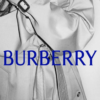


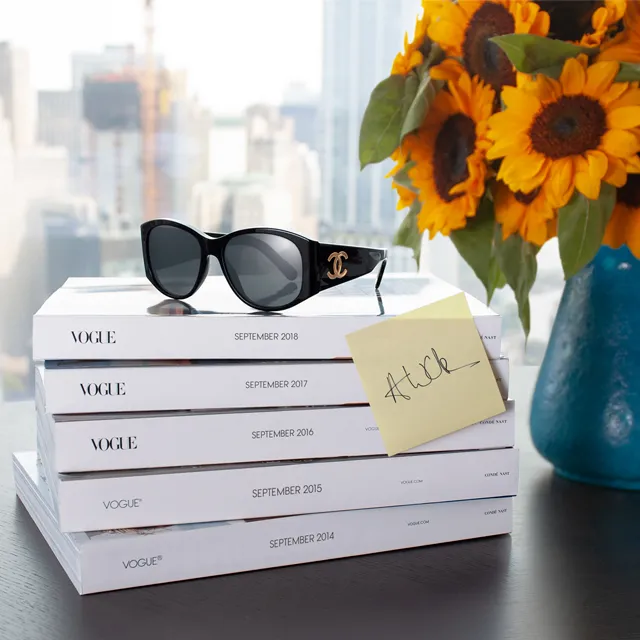
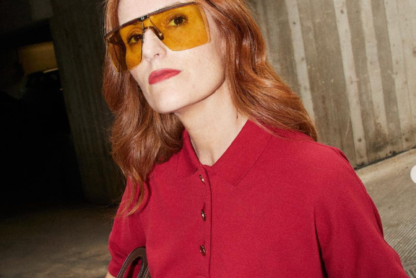
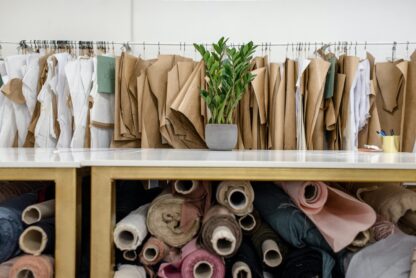

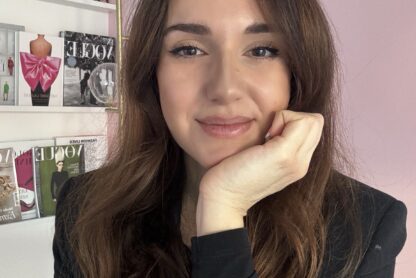

Bring an MBA in marketing, I have a few years of experience in affiliate marketing and entrepreneurship. But, I have always had a great knack for writing. Hence I would want to explore the experience of writing for vogue. Waiting in anticipation. Thanks